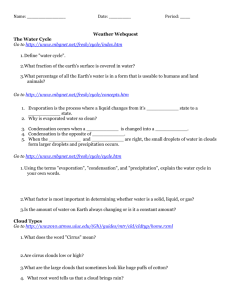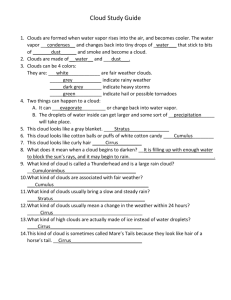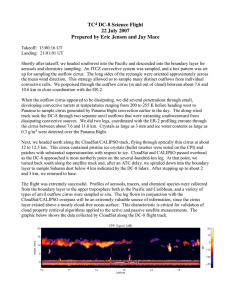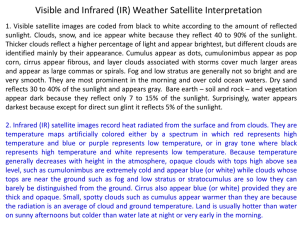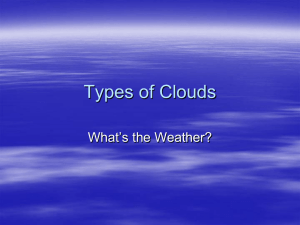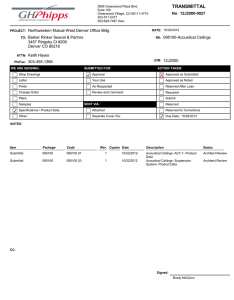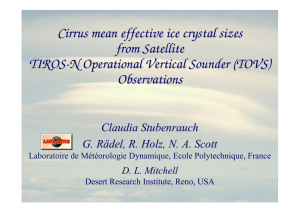grl52411-sup-0001-Supplementary
advertisement
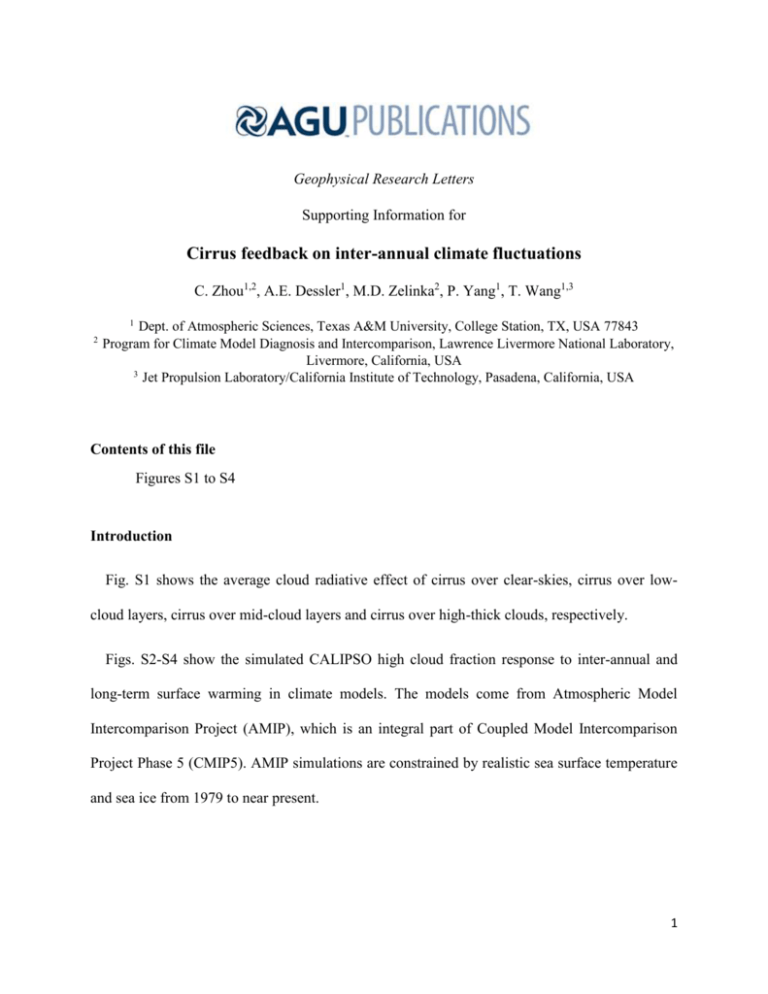
Geophysical Research Letters Supporting Information for Cirrus feedback on inter-annual climate fluctuations C. Zhou1,2, A.E. Dessler1, M.D. Zelinka2, P. Yang1, T. Wang1,3 1 2 Dept. of Atmospheric Sciences, Texas A&M University, College Station, TX, USA 77843 Program for Climate Model Diagnosis and Intercomparison, Lawrence Livermore National Laboratory, Livermore, California, USA 3 Jet Propulsion Laboratory/California Institute of Technology, Pasadena, California, USA Contents of this file Figures S1 to S4 Introduction Fig. S1 shows the average cloud radiative effect of cirrus over clear-skies, cirrus over lowcloud layers, cirrus over mid-cloud layers and cirrus over high-thick clouds, respectively. Figs. S2-S4 show the simulated CALIPSO high cloud fraction response to inter-annual and long-term surface warming in climate models. The models come from Atmospheric Model Intercomparison Project (AMIP), which is an integral part of Coupled Model Intercomparison Project Phase 5 (CMIP5). AMIP simulations are constrained by realistic sea surface temperature and sea ice from 1979 to near present. 1 Figure S1. Average cloud radiative effect of cirrus over clear-skies, cirrus over low-cloud layers, cirrus over mid-cloud layers and cirrus over high-thick clouds. The upper panels are for the SW component, the middle panels are for LW component, and the bottom panels are the net (SW+LW). 2 Figure S2. Response of simulated CALIPSO cloud fraction to tropical (upper panels) and global (lower panels) surface warming, calculated from CMIP5 GFDL-CM3 AMIP simulations. Blue lines are calculated from five 6-years periods, and the red lines are calculated from 30-years trend (1979-2008). Left panels are tropical cloud responses, and right panels are global average cloud responses. All types of high clouds are included in the CALIPSO-simulator cloud fraction. Cloud response to tropical surface temperature changes has very small variation among 6-years periods, and it is consistent to our conclusion that cirrus clouds are better correlated with the tropical surface temperature. 3 Figure S3. Same as Fig. S2, except for IPSL-CM5A-MR AMIP simulations. 4 Figure S4. Same as Fig. S2, except for CESM1-CAM5 AMIP simulations. 5
